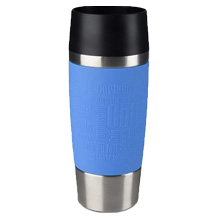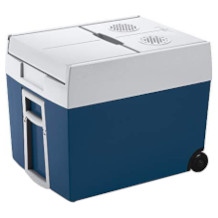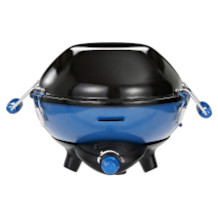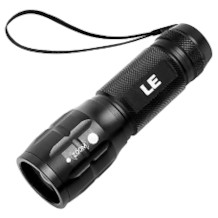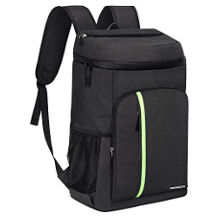Camping stove purchasing advice: how to choose the right product
- What You Need to Know
- A gas cooker is a mobile cooking unit for travellers.
- In addition to small cartridge cookers, there are large models with stands.
- The gas cartridges are screwed on or pierced.
- A cooker with piezo ignition ignites without a lighter or matches.
The mobile cooker
A camping cooker is an indispensable companion for every hiker, camper and festival-goer, as it makes it possible to prepare a hot meal or a hot drink at any time. The most common type of outdoor cooker is the gas cooker. Even small models can cook for several people. Canned ravioli is a classic camping food, but if you have some practice in cooking, you can also conjure up a full meal with a simple gas cooker.
Apart from easy transport, the biggest advantage of a gas cooker is its ease of use. All you have to do is insert the gas cartridge and the cooker is ready for use. Neither preheating nor the use of petrol is necessary. The gas flow is easy to regulate, which makes it possible to prepare meals and drinks individually. In addition, the cooker provides both light and heat.
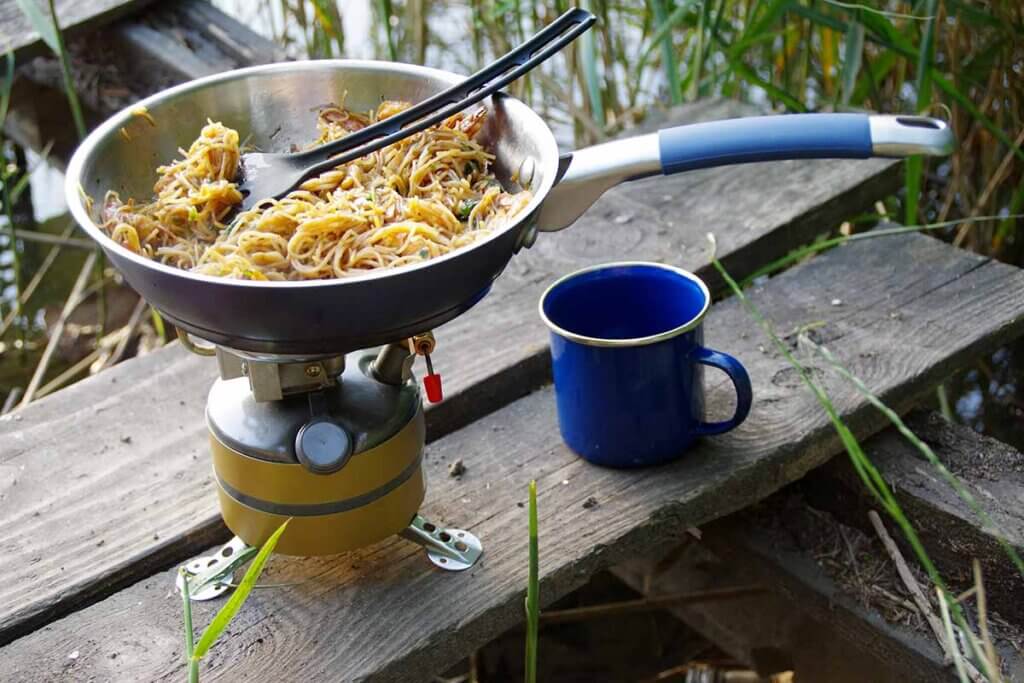
How a gas cooker works
Its simple operating principle makes the gas cooker a reliable camping companion. The fuel is gas, which is bought in cartridges or bottles. These have a standardised thread and can therefore be used by all manufacturers. Inexpensive cartridges are also available almost everywhere. As soon as the gas comes into contact with a spark, it ignites. Modern cookers usually have automatic ignition, so there is no need to use lighters or matches. A rack sits above the flame, on which the cookware is placed. Larger camping cookers have several cooking zones. After cooking, the gas supply is simply turned off and the flame goes out.
What is piezo ignition?
Piezo ignition is a particularly safe ignition method for gas. The simple mechanism does not require an electrical power source and is therefore used in lighters and gas cookers. Gas cookers also use piezo ignition. This is associated with the characteristic clicking sound when the ignition button is pressed. Piezo ignition eliminates the need for lighters or matches. Thus, there is no danger of burning oneself when igniting the flame.
When the ignition button is pressed, a spring relaxes, whereupon a plunger strikes a piezo crystal or ceramic part. This creates a spark that ignites the gas. Depending on the environmental influences, this mechanism does not always work reliably. Especially in cold weather, the piezo ignition may initially fail and several attempts are necessary before a spark is produced. In case the ignition fails completely, you should have a lighter or matches with you.
What types of gas cookers are there?
Gas cookers differ mainly in size. In addition to the small and mobile compact gas cooker, there are more stable models, some of which have several cooking surfaces. With these, the cartridge is often not screwed on, but connected to the gas cooker via a hose.
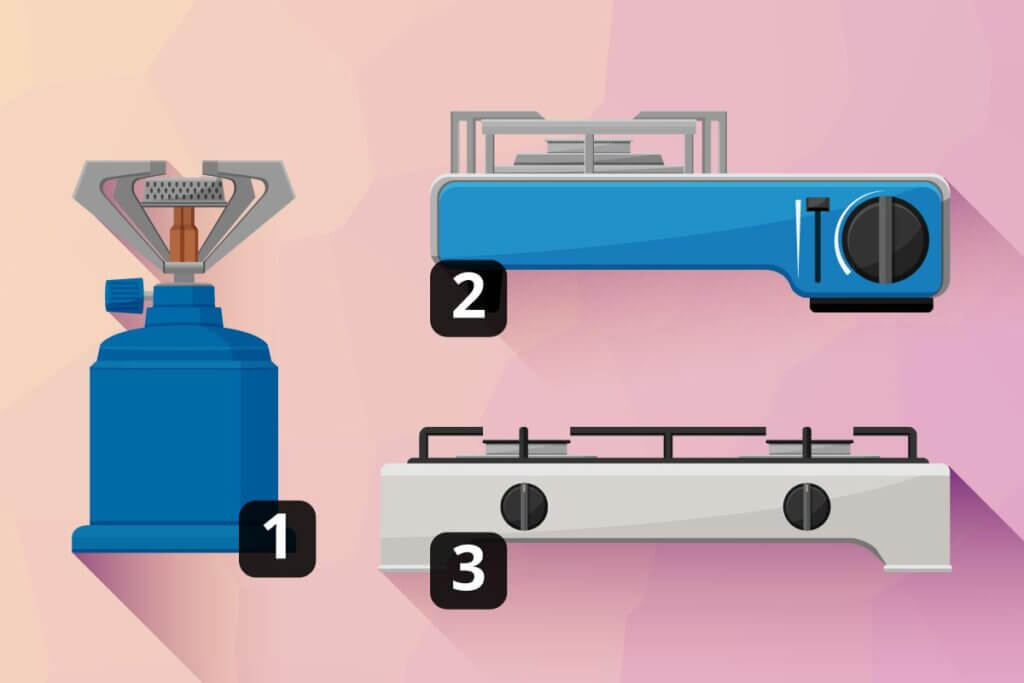
Compact or top-mounted cooker
This small, single-burner gas cooker is a camping classic that is also a common sight at festivals. This is no wonder, as it is the cheapest model. The small top-mounted cooker is placed on the cartridge, which is thus the cooker’s base. No other connections are necessary.
The simple and easy-to-use compact cooker is the right choice for a shorter trekking tour or festival. It has enough power for heating up canned food or brewing coffee. However, the design, which makes it easy to stow away, is also its weak point: since it stands on the cartridge, it is not particularly stable. Larger cookware does not fit on the countertop cooker, which makes it difficult to prepare more elaborate meals. Those who are on the road for longer than a few days will probably want to treat themselves to a little more comfort.
Pro points
- Compact
- Easy
- Inexpensive
- Easy to use
Drawbacks
- Unstable stand
- Only suitable for small pots
Compact gas cooker with external gas supply
This compact cooker does not stand on the gas cartridge, but on its own frame, which makes it much more stable than a conventional gas cooker. The flame is supplied with gas via a hose. Since the somewhat larger gas cooker and the cartridge have to be stowed separately, this version requires a little more space in the rucksack than a top-mounted cooker.
Pro points
- Tilt-proof
- Easy to operate
- Suitable for larger pots
Drawbacks
- Requires more space
- Comparatively heavy
Suitcase gas cooker
The portable gas cooker is similar to a hotplate and often comes in a practical case. It has feet that make it possible to place even larger cookware safely on the cooker. Due to the design, such a cooker not only has a higher stability, but also a larger cooking surface than a countertop cooker. This means that enough food can be prepared for a group. The gas cartridge is inserted at the side. A regulator is also located there, with which the flame can be individually adjusted, just like on a gas cooker.
A suitcase gas cooker is well suited for those who demand more from their food. If you are on the road for a long time, you may want to cook with fresh ingredients for a change instead of reaching for a can every day. A portable gas cooker is better suited for this. Although it fits well in a hiking backpack, it is heavier than a top-mounted cooker. Here, users must weigh up whether a light backpack or a decent stove is more important to them.
Pro points
- Stable
- Suitable for larger dishes
- Comfortable to use
Drawbacks
- Heavier than a countertop cooker
- Requires more space
Multi-flame gas cookers
These large camping cookers have multiple burners and offer maximum cooking convenience when on the move. However, they are too large and heavy to take on a hike. Multi-flame gas cookers are aimed at travellers and campers who are travelling by car, motorhome or caravan.
Just like in a mobile kitchen, any kind of meal can be prepared on the multi-flame cooker. For this, the camping cooker needs more gas than a small top-mounted gas cooker. For this reason, it is equipped with a gas hose that can be used to connect larger cartridges and also gas bottles to the appliance. As a rule, a multi-flame gas cooker has an integrated windbreak that protects the flames from gusts of wind. The small outdoor kitchen is ideal for family camping holidays or the allotment garden. Compared to the other models, it is the least mobile and the most expensive.
Pro points
- Suitable for large groups
- Very stable
- Particularly robust
- Integrated windbreak
Drawbacks
- Large and heavy
- Difficult to transport
What you should look for when buying a gas cooker
The most important factor when buying a gas cooker is how quickly food and drinks can be heated. The power is the decisive factor. You should also find out which closure system the appliance of your choice has. For those travelling without a car or motorhome, the size and weight of the cooker play an important role.
Performance – the quick meal
How quickly a gas cooker heats soup or water for coffee depends on the power. The most common unit in which manufacturers specify power is watts. Smaller compact gas cookers sometimes have an output of only 1,000 watts. Suitcase gas cookers are usually in the 2,000-watt range. Particularly powerful gas cookers can even reach 10,000 watts. In principle, the highest possible output is ideal. After all, you can always turn down the flame. But remember: a high wattage consumes more gas.
How to use the gas cooker efficiently
A gas cooker with a high wattage is no use if the flame is blown out by the wind. It is therefore advisable to use a small gas cooker with a separate windbreak. This has another advantage: less heat is lost to the environment.
Fuel and cartridge
In most cases, gas cookers use butane or propane gas as fuel. However, the environment must be warm enough for the cooker to work properly. Butane changes to a liquid state at temperatures below 10 degrees Celsius, which makes the gas cooker unusable. On a mountain or winter hike, cartridges containing a propane-butane mixture or pure propane are therefore recommended.
More important than the gas contained is the type of cartridge. Many users buy a gas cooker and only then realise that there are different closure systems. Basically, a distinction is made between cartridges with and without a valve.
The classic piercing cartridge is inexpensive and very widespread. It does not have its own valve. This means that the cartridge must remain mounted on the gas cooker until it is empty. It is pierced via a hollow mandrel on the appliance. Make sure that the hollow into which the mandrel pierces is clean so that the rubber seal reliably prevents gas from escaping. Piercing cartridges are common all over the world and can be found almost everywhere.
The screw-in valve cartridge is screwed to the appropriate connection via a thread. Such a cartridge has a valve that only opens when screwed on. Consequently, the cartridge can be dismantled when not in use, which is an advantage over the piercing cartridge.
Less common than the other two variants is the bayonet valve cartridge. Here, the connection is not screwed on, but plugged on and then secured with a bayonet lever. These cartridges are also removable.

Size and weight – hiking or camping?
For a long hike or backpacking trip, the smaller and lighter the gas cooker, the better. A top-mounted gas cooker is the first choice here. Even with a cartridge, such a cooker weighs only about 500 grams. If you also want to cook a lot when you are on the road, you can take a portable gas cooker with you. Such a model can also be easily stowed in a backpack, but at two to six kilograms it is considerably heavier than a small top-mounted cooker. In this case, users have to make concessions in terms of mobility.
In addition to the portable gas cooker, a multi-flame cooker with a hose system is also suitable for camping holidays. Such a gas cooker is only slightly more expensive than the suitcase version. For stationary use at a campsite, a large gas cooker makes sense, as its weight makes it more stable. For family holidays, a multi-flame gas cooker is the best solution.
Be careful with the weight specifications
Manufacturers usually state the weight of their gas cookers without the cartridge. An ordinary gas cartridge weighs about 200 grams. You must take this weight into account when buying a stove.
Suitable cookware
The most important criterion for cookware is the heat conductivity of the material. After all, the heat of the flame should be used optimally. Cookware for a gas cooker should not have plastic handles and should be uncoated, as the flame can damage handles and coating. A well-fitting lid prevents heat loss during cooking.
For a long time, aluminium pots were the standard cookware for gas cookers. They are still often included in the scope of delivery. The material has the practical property of being particularly light and is therefore well suited for backpacking and hiking. However, untreated aluminium reacts with acidic and salty food such as tomato sauce, fruits and pickled foods.
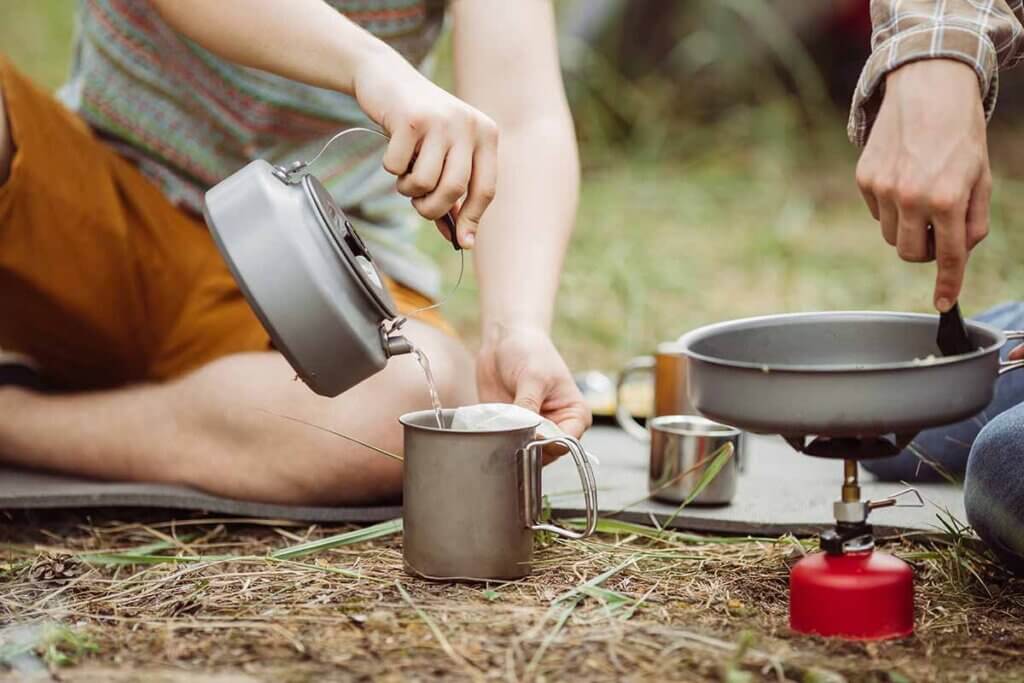
Specially treated anodised aluminium is hardened but more expensive than stainless steel alternatives. Preferably use wooden or plastic cutlery in aluminium dishes. Metal cutlery scratches the surface, then aluminium can get into the food in the form of tiny chips.
Uncoated stainless steel cookware is a good choice for those who travel by car or motorhome and do not have to carry the pots and pans themselves. The extremely heat-resistant material is not affected by the flame of a gas cooker. However, stainless steel does not heat up as quickly as an aluminium pot.
Tips for using a gas cooker
A great advantage of gas cookers is that they are easy to use: insert the cartridge, ignite the flame and you are ready to cook. If users follow the manufacturer’s safety instructions, nothing can happen. If you are on the road for a long time, you should know how many burns are possible with one cartridge. After the trekking tour, it is advisable to clean the cooker so that it is ready for the next trip.
Safety tips
Remember the following points when using a gas cooker:
- Do not use gas cookers in enclosed spaces (also applies to tents).
- Only use on solid, non-flammable ground
- Choose a cooking place that is protected from the wind
- Check the cooker and cartridge for defects before use.
- Do not leave the gas cooker unattended
As for the cartridge, protect it from heat and long periods of direct sunlight. Also be careful when replacing the cartridge. Let the gas cooker cool down completely beforehand and dismantle the container outdoors.
Burning time of a gas cartridge
If you are preparing thoroughly for a hike, you also need to calculate the amount of gas cartridges you will need. A standard cartridge weighing 230 grams has a burning time of about 70 minutes. This is enough to boil a litre of water about 20 times. With three boiling processes a day, a standard cartridge will last six to seven days.
However, some factors can influence the actual burning time of a gas cartridge. Wind affects the burning process, which increases consumption. For this reason, it makes sense to set up a windbreak for compact gas cookers. Cold water, for example from a stream, takes longer to boil than tap water. For these reasons, no general statement can be made about the burning time of gas cartridges.
Cleaning a gas stove
Like any piece of equipment, a gas cooker needs regular maintenance. This is how you ensure that you can use the appliance for as long as possible. Basically, every time you use the cooker, you should make sure that it is clean and that there are no wobbly parts. Free the gas cooker from soot and dirt after the hike or festival. Cleaning prevents the dirt from clogging the gas nozzles. You usually don’t need more than soapy water and a rinsing sponge for this. Also check that all seals are intact. With a cooker that is transported in luggage, a leak is extremely annoying.

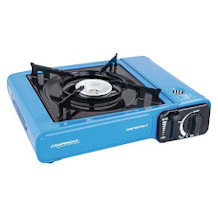
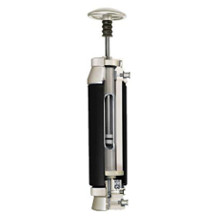
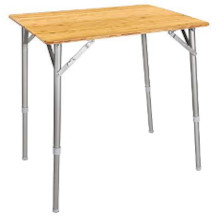
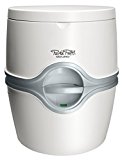
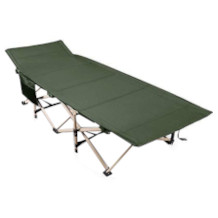

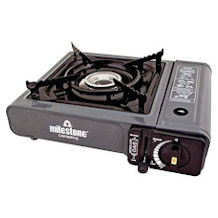
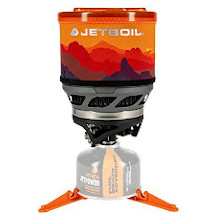
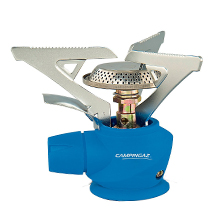
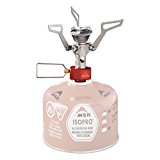
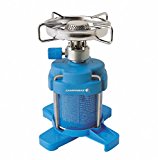
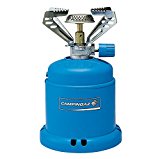
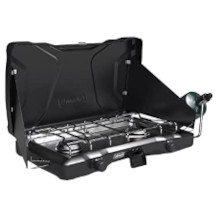
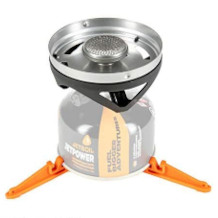
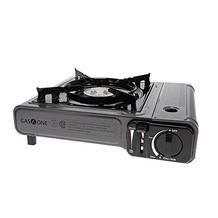
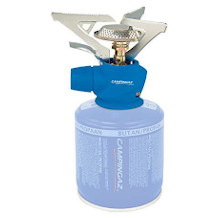
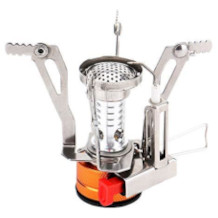
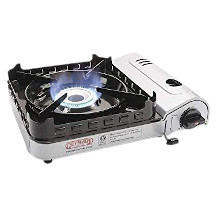

 376 reviews
376 reviews
